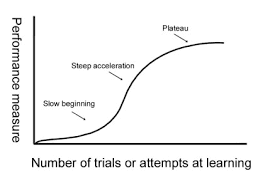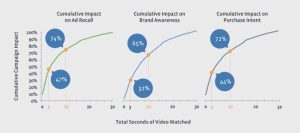— June 5, 2019
And…what kind of headaches did it cause?
I recently posted a short info video on how to determine when it’s time to let someone go. It’s one of the most popular struggles for leaders, managers, entrepreneurs, business owners…yes…just about everyone with a leadership role. 🙂
This post is a quick follow up to that. In the video I give what elements to consider… a bit of a checklist to determine when it’s time to fire someone. One area of assessment I didn’t include was the functional capacity or capability of an employee.
Have you ever kept an employee in a position way to long where it was clear they were struggling… and there was not an acceptable level of improvement in sight…over an extended period of time?
When describing elements of Human Resources – which I do in the most literally sense in my executive briefing book The Human Quotient: The Most Potent Force for Your Business Success – I describe job function abilities in these ways:
Technical Capabilities
Skills – exceptional ability: competent excellence in performance; expertness
Capabilities – having power and ability to act and/or do
*Bandwidth – mental capacity; intelligence: a person’s capacity to handle or think about more than one thing at the same time
*Capacity – the ability to receive or contain: power of receiving impressions, knowledge, etc.; mental ability: the maximum amount or number that can be received or contained
*Aptitude – capability; ability; innate or acquired capacity for something; talent: readiness or quickness in learning;
Job specific – activities related to a job description, job functions, job specific knowledge.
The Dilemma
I’ve witnessed on many occasions, particularly in industries with low skilled workers, that employees are kept in positions way too long that contain functions an employee just can’t adequately master – even after an extended period of time.
One of the main reasons this happens is because those managing, supervising or leading, see the task, function or role as very simple. And so, it is beyond their comprehension that a person is not able to grasp it – they just don’t believe they can’t.
The result?…they just keep giving them more time to “keep trying” motivated by the belief that “certainly at some point they’ll get it”.
In many cases, they don’t… and as time elapses, the manager becomes more frustrated and angry (which is difficult to control or hide and which seeps into the day to day interactions with the employee).
This condition subtly chips away at the employee’s sense of self esteem-self worth as it and their performance continues to decline. Mistakes can even increase in parts of the job they can do.
It becomes a downward, unhealthy cycle for all involved – the employee, the manager and fellow team members and in some cases with mounting collective bad attitudes and resentments. In human performance, this is called “the point of diminishing returns”.
What You Need to Know
1). There are certain functions people just won’t get…no matter how simple it may be to or for you.
2). There are certain functions that an employee may take more time than what a business can and should handle for them to barely get it. This is a lose/lose situation for you and the employee.
And here is the key to this knowledge – it will only be valuable for you (and your business) depending upon how quickly you can recognize, acknowledge, accept and believe it!
A manager’s disbelief, aka not accepting reality, keeps employees in jobs for which they are not nor will ever be qualified.
By the way, this doesn’t just apply to low skilled workers. I graduated near the top of my high school class and almost flunked college chemistry. For me, this was a reflection of aptitude.
Here’s another example. We all have something called capacity range (some call it bandwidth). This range varies person to person. So you might be able to handle much more in responsibilities and activities than a fellow leader. Job types have different capacity needs.
Note, it is good to grow or stretch in an attempt to expand capacity… just be careful folks aren’t stretched to the point of being broken. If you or an employee start experiencing extended “points of diminishing returns” with additional adverse results, then it’s time to make a change.
Ideally you want taking on new learning/responsibilities for those with aptitude and capacity potential to look like this:

Note: Some may never get above the line (or slightly above) and then performance drops below the line and may even decline further
By the way …”plateauing” in this case is not a negative thing. It suggests that little to no effort is now required because mastery or unconscious competence has been achieved. It also can be an indicator that it could be time for new challenges.
This post in conjunction with the video how to determine when it’s time to let someone go should give you adequate guidelines to determining what’s best for you and your employees as you smartly manage your talent.
Business & Finance Articles on Business 2 Community
(46)




